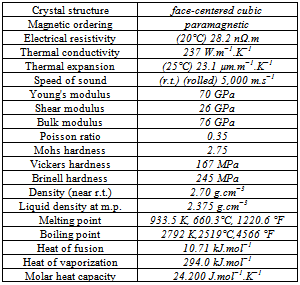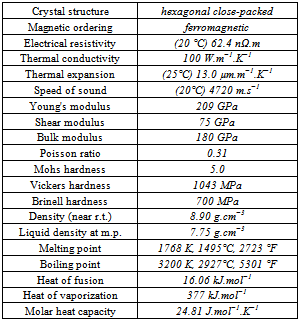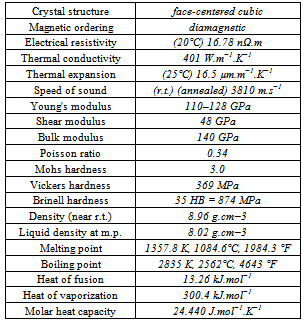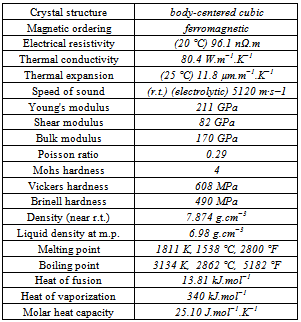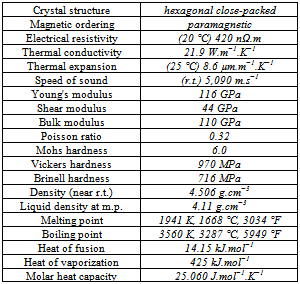| [1] | Iijima S., 1991. Helical microtubules of graphitic carbon, Nature, 354, 56-58. |
| [2] | Andrews R., Weisenberger M.C., 2004. Carbon nanotube polymer composites, Current Opinion in Solid State and Materials Science, 8(1), 31-37. |
| [3] | Chou T.W., Gao L., Thostenson E.T., Zhang Z.G., Byun J.H., 2010. An assessment of the science and technology of carbon nanotube-based fibers and composites, Composites Science and Technology, 70(1), 1-19. |
| [4] | Yan J., Fan Z., Zhi L., 2012. Functionalized Carbon Nanotubes and Their Enhanced Polymers (chapter 8.17), Polymer Science: A Comprehensive Reference, Krzysztof Matyjaszewski and Martin Möller (eds.), Elsevier, Amsterdam, 2012, 439-478. |
| [5] | ISI Web of Knowledge, 2013 (www.webofknowledge.com) |
| [6] | Girot F.A, Majidi A.P., Chou T.W., 2003. Metal Matrix Composites, Encyclopedia of Physical Science and Technology, Robert A. Meyers (ed.), Academic Press, New York, 485-493. |
| [7] | Curtin W.A., Sheldon B.W., 2004. CNT-reinforced ceramics and metals, Materials Today, 7, 44-49. |
| [8] | Li Q.Q., Rottmair C.A., Singer R.F., 2010. CNT reinforced light metal composites produced by melt stirring and by high pressure die casting, Composites Science and Technology, 70(16), 2242-2247. |
| [9] | Neubauer E., Kitzmantel M., Hulman M., Angerer P., 2010. Potential and challenges of metal-matrix-composites reinforced with carbon nanofibers and carbon nanotubes, Composites Science and Technology, 70(16), 2228-2236. |
| [10] | Bakshi S.R., Lahiri D., Agarwal A., 2010. Carbon nanotube reinforced metal matrix composites - a review, International Materials Reviews, 55(1), 41-64. |
| [11] | Zhong R., Cong H., Hou P.X., 2003, Fabrication of nano-Al based composites reinforced by single-walled carbon nanotubes, Carbon, Letter to the Editor, 41(4), 848-851. |
| [12] | Cha S.I., Kim K.T., Lee K.H., Mo C.B., Hong S.H., 2005, Strengthening and toughening of carbon nanotube reinforced alumina nanocomposite fabricated by molecular level mixing process, Scripta Materialia, 53(7), 793-797. |
| [13] | George R., Kashyap K.T., Rahul R., Yamdagni S., 2005, Strengthening in carbon nanotube/aluminium (CNT/Al) composites, Scripta Materialia, 53(10), 1159-1163. |
| [14] | Deng C.F., Zhang X., Ma Y., Wang D., 2007, Fabrication of aluminum matrix composite reinforced with carbon nanotubes, Rare Metals, 26(5), 450-455. |
| [15] | Deng C., Zhang X.X., Wang D., Lin Q., Li A., 2007, Preparation and characterization of carbon nanotubes / aluminum matrix composites, Materials Letters, 61(8-9), 1725-1728. |
| [16] | Deng C.F., Wang D.Z., Zhang X.X., Ma Y.X., 2007, Damping characteristics of carbon nanotube reinforced aluminum composite, Materials Letters, 61(14-15), 3229-3231. |
| [17] | Deng C.F., Ma Y.X., Zhang P., Zhang X.X., Wang D.Z., 2008, Thermal expansion behaviours of aluminum composite reinforced with carbon nanotubes, Materials Letters, 62(15), 2301-2303. |
| [18] | Bakshi S.R., Singh V., Balani K., McCartney D.G., Seal S., Agarwal A., 2008, Carbon nanotube reinforced aluminum composite coating via cold spraying, Surface and Coatings Technology, 202(21), 5162-5169. |
| [19] | Choi H.J., Kwon G.B., Lee G.Y., Bae D.H., 2008, Reinforcement with carbon nanotubes in aluminum matrix composites, Scripta Materialia, 59(3), 360-363. |
| [20] | Pérez-Bustamante R., Estrada-Guel I., Antúnez-Flores W., Miki-Yoshida M., Ferreira P.J., Martínez-Sánchez R., 2008, Novel Al-matrix nanocomposites reinforced with multi - walled carbon nanotubes, Journal of Alloys and Compounds, 450(1–2), 323-326. |
| [21] | Esawi A.M.K, El Borady M.A., 2008, Carbon nanotube -reinforced aluminium strips, Composites Science and Technology, 68(2), 486-492. |
| [22] | Esawi A.M.K., Morsi K., Sayed A., Abdel Gawad A., Borah P., 2009, Fabrication and properties of dispersed carbon nanotube–aluminum composites, Materials Science and Engineering: A, 508(1–2), 167-173. |
| [23] | Esawi A.M.K., Morsi K., Sayed A., Taher M., Lanka S., 2010, Effect of carbon nanotube (CNT) content on the mechanical properties of CNT-reinforced aluminium composites, Composites Science and Technology, 70(16), 2237-2241. |
| [24] | Choi H.J., Lee S.M., Bae D.H., 2010, Wear characteristic of aluminum-based composites containing multi-walled carbon nanotubes, Wear, 270(1–2), 12-18. |
| [25] | Choi H.J., Shin J.H., Min B.H., Bae D.H., 2010, Deformation behaviour of Al–Si alloy based nanocomposites reinforced with carbon nanotubes, Composites Part A: Applied Science and Manufacturing, 41(2), 327-329. |
| [26] | Choi H.J., Bae D.H., 2011, Creep properties of aluminum-based composite containing multi-walled carbon nanotubes, Scripta Materialia, 65(3), 194-197. |
| [27] | Singhal S.K., Pasricha R., Teotia S., Kumar G., Mathur R.B., 2011, Fabrication and characterization of Al-matrix composites reinforced with amino-functionalized carbon nanotubes, Composites Science and Technology, 72(1), 103-111. |
| [28] | Lipecka J., Andrzejczuk M., Lewandowska M., Janczak-Rusch J., Kurzydłowski K.J., 2011, Evaluation of thermal stability of ultrafine grained aluminium matrix composites reinforced with carbon nanotubes, Composites Science and Technology, 71(16), 1881-1885. |
| [29] | Choi H.J., Shin J.H., Bae D.H., 2011, Grain size effect on the strengthening behaviour of aluminum-based composites containing multi-walled carbon nanotubes, Composites Science and Technology, 71(15), 1699-1705. |
| [30] | Jiang L., Li Z.Q., Fan G.L., Cao L.L., Zhang D., 2012a, The use of flake powder metallurgy to produce carbon nanotube (CNT)/aluminum composites with a homogenous CNT distribution, Carbon, 50(5), 1993-1998. |
| [31] | Jiang L., Li Z.Q., Fan G.L., Cao L.L., Zhang D., 2012b, Strong and ductile carbon nanotube/aluminum bulk nanolaminated composites with two-dimensional alignment of carbon nanotubes, Scripta Materialia, 66(6), 331-334. |
| [32] | Kwon H.S., Leparoux M., 2012, Hot extruded carbon nanotube reinforced aluminum matrix composite materials, Nanotechnology, 23(41), 415701. |
| [33] | Liu Z.Y., Xiao B.L., Wang W.G., Ma Z.Y., 2012a, Elevated temperature tensile properties and thermal expansion of CNT/2009Al composites, Composites Science and Technology, 72(15), 1826-1833. |
| [34] | Yoo S.J., Han S.H., Kim W.J., 2013, Strength and strain hardening of aluminum matrix composites with randomly dispersed nanometer-length fragmented carbon nanotubes, Scripta Materialia, 68(9), 711-714. |
| [35] | Yang X.D., Liu E., Shi C.S., He C., Li J.J., Zhao N., Kondoh K., 2013, Fabrication of carbon nanotube reinforced Al composites with well-balanced strength and ductility, Journal of Alloys and Compounds, 563, 216-220. |
| [36] | Chen X., Xia J., Peng J., Li W., Xie S., 2000, Carbon-nanotube metal-matrix composites prepared by electroless plating, Composites Science and Technology, 60(2), 301-306. |
| [37] | Su F.H., Liu C.S., Guo J.L., Huang P., 2013. Characterizations of nanocrystalline Co and Co/MWCNT coatings produced by different electrodeposition techniques, Surface & Coatings Technology, 217, 94-104. |
| [38] | Kim K.T., Cha S.I., Hong S.H., 2007, Hardness and wear resistance of carbon nanotube reinforced Cu matrix nanocomposites, Materials Science and Engineering: A, 449–451, 46-50. |
| [39] | Sun F.W., Li H., Liew K.M., 2010, Compressive mechanical properties of carbon nanotubes encapsulating helical copper nanowires, Carbon, 48(5), 1586-1591. |
| [40] | Trinh P.V., Trung T.B., Thang N.B., Thang B.H., Tinh T.X., Quang L.D., Phuong D.D., Minh P.N., 2010, Calculation of the friction coefficient of Cu matrix composite reinforced by carbon nanotubes, Computational Materials Science, 49(4), S239-S241. |
| [41] | Uddin S.M., Mahmud T., Wolf C., Glanz C., Kolaric I., Volkmer C., Höller H., Wienecke U., Roth S., Fecht H.J., 2010, Effect of size and shape of metal particles to improve hardness and electrical properties of carbon nanotube reinforced copper and copper alloy composites, Composites Science and Technology, 70(16), 2253-2257. |
| [42] | Bhat A., Balla V.K., Bysakh S., Basu D., Bose S., Bandyopadhyay A., 2011, Carbon nanotube reinforced Cu–10Sn alloy composites: Mechanical and thermal properties, Materials Science and Engineering: A, 528(22–23), 6727-6732. |
| [43] | Xu W., Hu R., Li J.S., Fu H.Z., 2011, Effect of electrical current on tribological property of Cu matrix composite reinforced by carbon nanotubes, Transactions of Nonferrous Metals Society of China, 21(10), 2237-2241. |
| [44] | Cho S.C., Kikuchi K., Kawasaki A., Kwon H.S., Kim Y., 2012, Effective load transfer by a chromium carbide nanostructure in a multi-walled carbon nanotube/copper matrix composite, Nanotechnology, 23, 315705. |
| [45] | Shukla A.K., Nayan N., Murty S.V.S.N., Sharma S.C., Chandran P., Bakshi S.R., George K.M., 2013, Processing of copper–carbon nanotube composites by vacuum hot pressing technique, Materials Science and Engineering: A, 560, 365-371. |
| [46] | Tsai P.C., Jeng Y.R., 2013, Experimental and numerical investigation into the effect of carbon nanotube buckling on the reinforcement of CNT/Cu composites, Composites Science and Technology, 79, 28-34. |
| [47] | Ding J., Liu B.H., Dong Z.L., Zhong Z.Y., Lin J.Y., White T., 2004, The preparation of Al2O3/M (Fe, Co, Ni) nanocomposites by mechanical alloying and the catalytic growth of carbon nanotubes, Composites Part B: Engineering, 35(2), 103-109. |
| [48] | Golberg D., Mitome M., Müller Ch., Tang C., Leonhardt A., Bando Y., 2006, Atomic structures of iron-based single-crystalline nanowires crystallized inside multi-walled carbon nanotubes as revealed by analytical electron microscopy, Acta Materialia, 54(9), 2567-2576. |
| [49] | Shpak A.P., Kolesnik S.P., Mogilny G.S., Petrov Yu.N., Sokhatsky V.P., Trophimova L.N., Shanina B.D., Gavriljuk V.G., 2007, Structure and magnetic properties of iron nanowires encased in multiwalled carbon nanotubes, Acta Materialia, 55(5), 1769-1778. |
| [50] | Pang L.X, Sun K.N, Ren S., Sun C., Fan R.H., Lu Z.H, 2007, Fabrication and microstructure of Fe3Al matrix composite reinforced by carbon nanotube, Materials Science and Engineering: A, 447(1–2), 146-149. |
| [51] | Pang L.X., Xing D.J., Zhang A.Q., Xu J., Sun S.S. 2009a. Magnetic Properties of MWNTs-Fe3Al Composite,Advanced Materials Research, 79-82, 1351-1354. |
| [52] | Pang L.X., Zhang J.S, Xu J., Sun K.N., 2009b, Effect of adding carbon nanotubes on stress of Fe3Al intermetallics, Transactions of Nonferrous Metals Society of China, 19(5), 1201-1205. |
| [53] | Pang LX, Xing D, Zhang A, Xu J, Zhang JS, Fan RH, 2010, Carbon Nanotube Reinforced Intermetallic, Advanced Composite Materials, Vol. 19, Iss. 3, 261-267. |
| [54] | Madaleno L., Pyrz R., Jensen L.R., Pinto J.J.C., Lopes A.B., Dolomanova V., Schjødt-Thomsen J., Rauhe J.C.M., 2012, Synthesis of clay–carbon nanotube hybrids: Growth of carbon nanotubes in different types of iron modified montmorillonite, Composites Science and Technology, 72(3), 377-381. |
| [55] | Thakur S.K, Srivatsan T.S., Gupta M., 2007. Synthesis and mechanical behaviour of carbon nanotube–magnesium composites hybridized with nanoparticles of alumina, Materials Science and Engineering: A, 466(1–2):32-37. |
| [56] | Li Q.Q., Viereckl A., Rottmair C.A., Singer R.F, 2009. Improved processing of carbon nanotube/magnesium alloy composites, Composites Science and Technology, 69(7–8), 1193-1199. |
| [57] | Schaller R., Mari D., Marques dos Santos S., Tkalcec I., Carreño-Morelli E., 2009. Investigation of hydrogen storage in carbon nanotube–magnesium matrix composites, Materials Science and Engineering: A, 521–522, 147-150. |
| [58] | Aung N.N., Zhou W., Goh C.S., Nai S.M.L., Wei J., 2010. Effect of carbon nanotubes on corrosion of Mg–CNT composites, Corrosion Science, 52(5), 1551-1553. |
| [59] | Kondoh K., Fukuda H., Umeda J., Imai H., Fugetsu B, Endo M., 2010. Microstructural and mechanical analysis of carbon nanotube reinforced magnesium alloy powder composites, Materials Science and Engineering: A, 527(16–17), 4103-4108. |
| [60] | Srivatsan T.S., Godbole C., Paramsothy M., Gupta M. 2011a. Influence of Carbon Nanotubes and Processing on Cyclic Fatigue and Final Fracture Behaviour of a Magnesium Alloy, Advanced Materials Research, 410, 3-16. |
| [61] | Srivatsan T.S., Godbole C., Paramsothy M., Gupta M., 2011b. On the Influence of Carbon Nanotubes and Processing on Tensile Response and Fracture Behaviour of a Magnesium Alloy, Advanced Materials Research, 410, 133-141. |
| [62] | Srivatsan T.S., Godbole C., Paramsothy M., Gupta M. 2012, Influence of nano-sized carbon nanotube reinforcements on tensile deformation, cyclic fatigue, and final fracture behaviour of a magnesium alloy, Journal of Materials Science, 47(8), 3621-3638. |
| [63] | Park Y., Cho K., Park I., Park Y., 2011. Fabrication and mechanical properties of magnesium matrix composite reinforced with Si coated carbon nanotubes, Procedia Engineering, 10, 1446-1450. |
| [64] | Fukuda H, Kondoh K., Umeda J., Fugetsu B., 2011a. Fabrication of magnesium based composites reinforced with carbon nanotubes having superior mechanical properties, Materials Chemistry and Physics, 127(3), 451-458. |
| [65] | Fukuda H., Kondoh K., Umeda J., Fugetsu B., 2011b, Interfacial analysis between Mg matrix and carbon nanotubes in Mg–6 wt.% Al alloy matrix composites reinforced with carbon nanotubes, Composites Science and Technology, 71(5), 705-709. |
| [66] | Zhou X., Su D., Wu C.W., Liu L.M., 2012. Tensile Mechanical Properties and Strengthening Mechanism of Hybrid Carbon Nanotube and Silicon Carbide Nanoparticle - Reinforced Magnesium Alloy Composites, Journal of Nanomaterials, 851862. |
| [67] | Sun F.J., Shi C.S., Rhee K.Y., Zhao N., 2013. In situ synthesis of CNTs in Mg powder at low temperature for fabricating reinforced Mg composites, Journal of Alloys and Compounds, 551, 496-501. |
| [68] | Wang L.Y., Tu J.P., Chen W.X., Wang Y.C., Liu X.K., Olk C., Cheng D.H., Zhang X.B., 2003. Friction and wear behaviour of electroless Ni-based CNT composite coatings, Wear, 254(12), 1289-1293. |
| [69] | Scharf, T. W.; Neira, A.; Hwang, J. Y.; 2009. Self-lubricating carbon nanotube reinforced nickel matrix composites, Journal of Applied Physics, 106(1), 013508. |
| [70] | Singh, A. R. P.; Hwang, J. Y.; Scharf, T. W.; 2010. Bulk nickel-carbon nanotube nanocomposites by laser deposition, Materials Science and Technology, 26(11), 1393-1400. |
| [71] | Liu, B.; Liu, L. R.; Liu, X. J. 2012b. Variation of crystal structure in nickel nanoparticles filled in carbon nanotubes, Materials Science and Technology, 28(11), 1345-1348. |
| [72] | Hwang J.Y., Lim B.K., Tiley J., Banerjee R., Hong S.H., 2013. Interface analysis of ultra-high strength carbon nanotube/nickel composites processed by molecular level mixing, Carbon, 57, 282-287. |
| [73] | Xue F., Jiehe S., Yan F., Wei C., 2010. Preparation and elevated temperature compressive properties of multi-walled carbon nanotube reinforced Ti composites, Materials Science and Engineering: A, 527(6), 1586-1589. |
| [74] | Feng X., Sui J., Cai W., 2011a. Processing of multi-walled carbon nanotube-reinforced TiNi composites by hot pressed sintering, Journal of Composite Materials, 45(15), 1553-1557. |
| [75] | Feng X., Sui J.H., Cai W., Liu A.L., 2011b. Improving wear resistance of TiNi matrix composites reinforced by carbon nanotubes and in situ TiC, Scripta Materialia, 64(9), 824-827. |
| [76] | Cai W., Feng X., Sui J., 2012. Preparation of multi-walled carbon nanotube-reinforced TiNi matrix composites from elemental powders by spark plasma sintering, Rare Metals, 31(1), 48-50. |
| [77] | Kondoh K., Threrujirapapong T., Umeda J., Fugetsu B., 2012. High-temperature properties of extruded titanium composites fabricated from carbon nanotubes coated titanium powder by spark plasma sintering and hot extrusion, Composites Science and Technology, 72(11), 1291-1297. |
| [78] | Li S.F., Sun B., Imai H., Mimoto T., Kondoh K., 2013. Powder metallurgy titanium metal matrix composites reinforced with carbon nanotubes and graphite, Composites Part A: Applied Science and Manufacturing, 48, 57-66. |


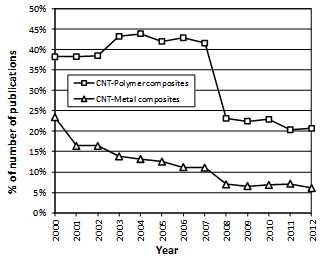
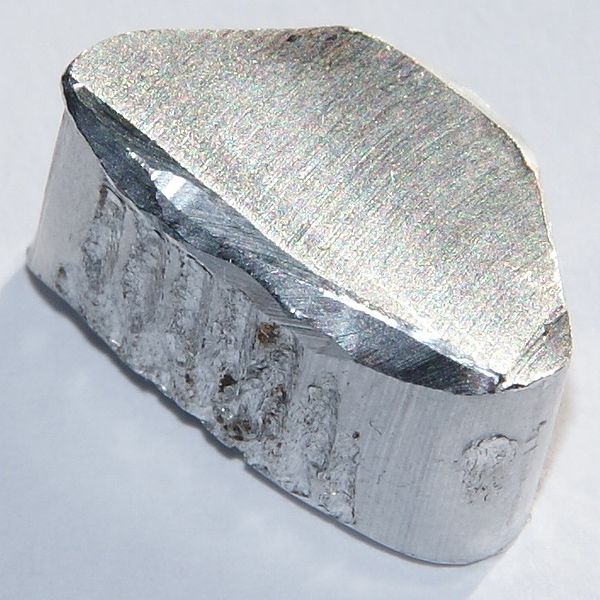


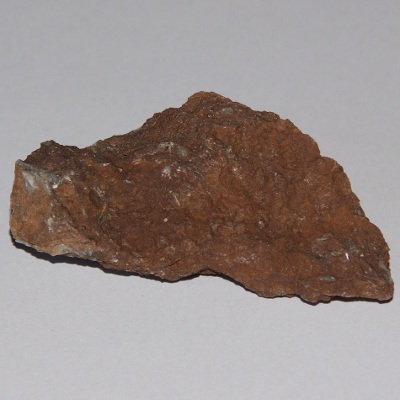
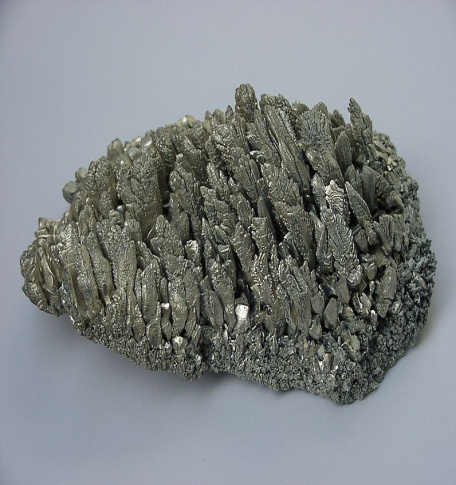
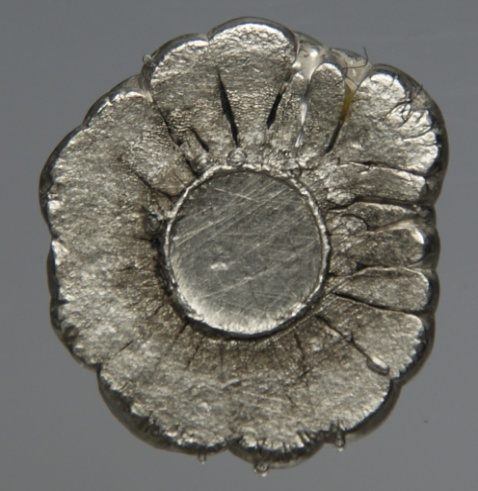

 Abstract
Abstract Reference
Reference Full-Text PDF
Full-Text PDF Full-text HTML
Full-text HTML